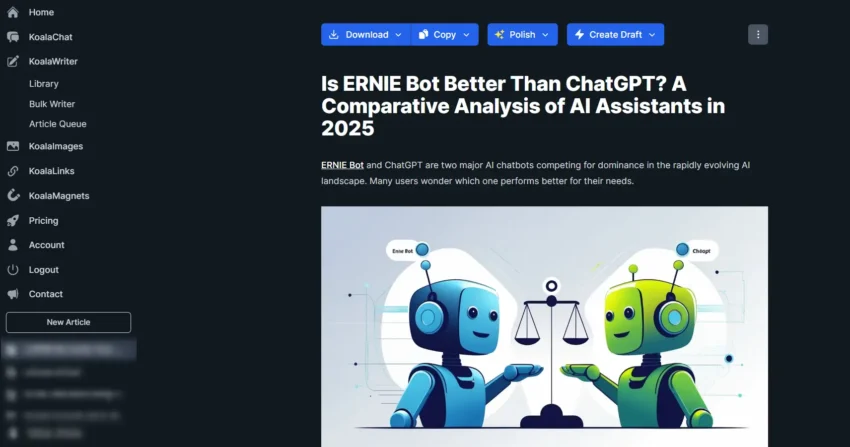The European Union’s approach to AI is shaping the digital future of Europe. The European AI Strategy aims to make the EU a leader in artificial intelligence while ensuring that AI technologies are safe and trustworthy.
One key aspect of this strategy is the EU AI Act, which is the first legal framework addressing AI risks. This regulation ensures that AI benefits everyone, from improving healthcare to enhancing sustainable energy solutions.
The European Commission has also set up the Coordinated Plan on Artificial Intelligence to implement this strategy.
This plan aligns with Europe’s digital and green priorities, focusing on creating a resilient and innovative AI environment across the Union.
Foundations of the EU AI strategy

The European Union aims to be a leader in artificial intelligence by focusing on trust, innovation, and human-centric technologies.
The strategy by the European Commission includes specific frameworks and coordinated plans to ensure AI systems benefit society while respecting fundamental rights.
Vision and ambitions
The EU’s main goal is to create a resilient and digitally advanced Europe. The European Commission wants Europe to be a global hub for AI by promoting safe and reliable technologies.
They plan to achieve this through strong public and private investments. For example, the targets include €20 billion per year over the next decade.
This funding will support research and development to foster innovation. Additionally, the AI Act, the first-ever legal framework on AI, focuses on addressing risks and ensuring safety and transparency.
The European approach to trust and excellence
a) Trust is a cornerstone of the EU’s AI strategy. The European approach emphasizes making AI technologies that people feel safe to use.
b) Human-centric AI ensures that systems respect fundamental rights, such as privacy and data protection. This is achieved through stringent rules and ethical guidelines.
c) Excellence in AI within Europe involves high standards in technological development and innovation. The Coordinated Plan on AI supports this by promoting shared strategies across member states.
Combining efforts ensures that AI development remains consistent and aligned with the values of safety and responsibility. The AI Act, along with updates to the coordinated plan, provides a solid foundation for these efforts, making Europe a leader in both trust and excellence in AI.
Regulatory Framework and AI Act

The European Union’s AI Act is designed to create a comprehensive legal structure around artificial intelligence. Its primary focus is on ensuring safety, transparency, and respect for fundamental rights in AI technologies.
Risk-based approach
The AI Act uses a risk-based approach to classify AI systems.
Systems are grouped into categories like minimal risk, high risk, and unacceptable risk.
- Minimal Risk: These systems include applications like spam filters which need minimal regulation.
- High Risk: Includes systems impacting areas like healthcare, hiring, or law enforcement. They need strict oversight and must comply with safety, security, and transparency standards.
- Unacceptable Risk: These are banned due to potential harm to individuals’ rights and freedoms, like AI for social scoring.
This classification helps ensure that AI technologies align with ethical standards and do not harm users.
Legal and ethical considerations
The AI Act prioritizes legal and ethical concerns to build trust in AI systems. By mandating transparency, it ensures users understand how decisions are made by AI.
- Transparency: AI providers must disclose certain elements of their systems, making it clear how data is used.
- Ethics: AI needs to respect human rights, adhering to ethical principles like fairness and non-discrimination.
For high-risk AI systems, compliance with regulations is critical. They must pass stringent tests to ensure they do not compromise safety or security. This fosters an environment where AI technologies can be developed responsibly and securely in Europe.
The AI Act represents a significant step towards creating a balanced and trusted AI landscape.
Investments and financing AI innovation
Europe is making significant investments in artificial intelligence, focusing on funding research and infrastructure and supporting SMEs and startups.
Key programs and strategies target sustainable growth and innovation in the AI sector.
Funding AI research and infrastructure
The European Union is channeling substantial funds into AI research and infrastructure.
Notably, through initiatives like Horizon Europe, the EU committed €1 billion per year from 2021 to 2027. This funding aims to enhance AI capabilities and infrastructure.
In addition, the Digital Europe program is pivotal, directing funds towards developing world-leading supercomputing resources. This enhances the EU’s AI ecosystem, supporting innovation and technological advancements.
Furthermore, coordinated efforts ensure investments align with strategic goals to avoid fragmentation within the region.
Testing and experimentation facilities receive support, providing real-world environments for implementing and refining AI technologies.
Supporting SMEs and startups
The EU places a strong emphasis on aiding small and medium-sized enterprises (SMEs) and startups.
One key strategy includes the Recovery and Resilience Facility, which aims to increase investment in AI, targeting €20 billion yearly.
This plan focuses on boosting innovation by providing significant financial support and a strategic framework.
SMEs and startups benefit from initiatives like the Communication on boosting startups in trustworthy AI. This framework supports the development and market introduction of innovative AI solutions, ensuring trust and reliability.
These efforts help create a vibrant AI market, fostering a competitive environment where new companies can thrive. This systematic support framework ensures that even the smallest enterprises can contribute to and benefit from the booming AI sector.
From research to deployment
Shifting AI from research labs to real-world applications involves strategic steps to ensure smooth integration and effective use.
I break this process down into bridging the gap between lab research and market readiness and integrating AI into public services and specific sectors.
Bridging the lab-to-market gap
Taking AI from the lab to the market requires strong collaboration between researchers and businesses.
This can be supported through Public-Private Partnerships (PPPs) which make it easier to share knowledge and resources.
The European Commission has set up Networks of AI Excellence Centres to promote this synergy by encouraging industry and academic collaboration.
These centers also help diversify AI applications and ensure they are inclusive.
Innovative funding models, such as tax incentives, can boost AI deployment.
They motivate businesses to invest in AI technologies by lowering financial barriers. Furthermore, targeted support for startups and small-to-medium enterprises (SMEs) helps bring fresh ideas from research into the marketplace.
AI in public services and sectoral deployment
AI is increasingly used to enhance public services, making them more efficient and accessible.
In Europe, AI is now part of government strategies to improve health care, transportation, and education.
For instance, AI can optimize health care by supporting early diagnosis and personalized treatment plans. In transportation, it helps in managing traffic flows and ensuring safety. Education systems are using AI to provide personalized learning experiences and manage administrative tasks effectively.
AI integration in these sectors is guided by Europe’s human-centric approach, ensuring that AI deployment respects privacy and ethical standards.
Proper implementation ensures that AI serves the public interest and drives social progress.
Ensuring AI benefits society and economy
In implementing Europe’s AI strategy, it’s important to consider how AI will impact society and the economy. Key areas of focus include social benefits, employment changes, environmental impacts, and sustainability improvements.
Social impact and employment
AI has the potential to drastically change job markets. Many tasks once done by humans are now automated, leading to increased efficiency and productivity.
This shift can create new jobs in the tech and AI fields.
Still, there are concerns about job losses.
To address this, the EU emphasizes continuous skills development. Training programs and workshops can help workers adapt to new roles. This approach aims to make transitions smoother and reduce unemployment.
Also, AI can improve public services. For example, AI systems can enhance healthcare by predicting disease patterns and personalizing treatments. This not only improves patient outcomes but also reduces medical costs. Public safety and education can also benefit from AI innovations.
AI for the environment and sustainability
AI technologies play a crucial role in tackling environmental challenges. For instance, AI can optimize energy use in homes and businesses, reducing waste and cutting costs.
AI also helps in monitoring and protecting wildlife, ensuring better conservation efforts.
Sustainable agriculture is another area where AI makes a difference. By analyzing weather patterns and soil conditions, AI can help farmers optimize planting and harvesting schedules.
This leads to higher productivity and reduced environmental impact.
The EU’s AI strategy supports these initiatives. Policies and funding are directed towards sustainable AI development.
This ensures that AI not only boosts economic growth but also contributes positively to the environment, aligning with global sustainability goals.
The European AI Office promotes a trustworthy AI ecosystem to get these societal and economic benefits. This structured approach places Europe as a global reference point for developing ethical and sustainable AI solutions.












